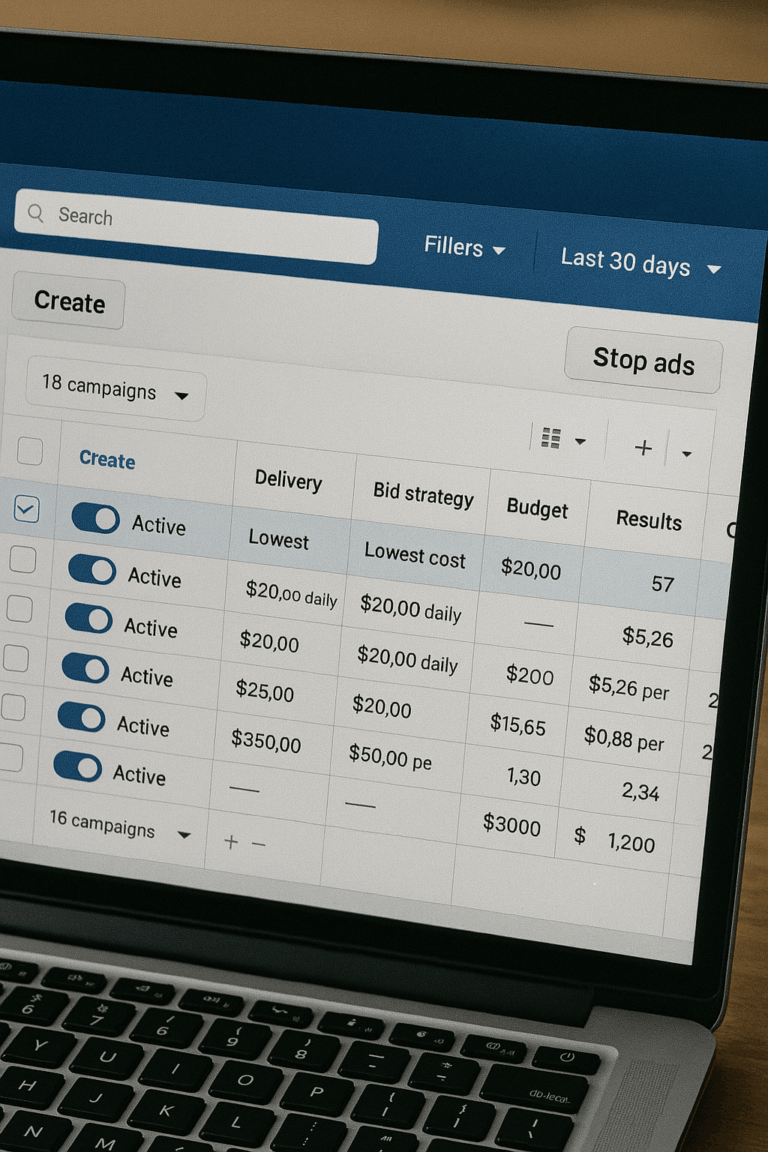Holdout Testing: The Gold Standard for Marketing Measurement

Most marketing dashboards show what happened. Holdout testing proves what wouldn’t have happened without your spending.
When every digital platform claims credit for the same conversion, marketers are left guessing whether their budget created growth or simply captured it. Holdout tests introduce a counterfactual — a control group that looks like business as usual. Compare that baseline to your test group, and you can finally answer the only question that matters: did this investment actually move the needle?
What Is Holdout Testing?
Holdout testing is a causal inference method used in data science that measures the incremental lift of marketing by intentionally withholding exposure from a group of customers or markets. Unlike attribution models that slice credit across touchpoints, holdout tests show the difference between outcomes with spend versus without spend.
A simple example: pause retargeting ads for 20% of your customer base while keeping them live for the rest. If both groups convert at similar rates, you’ve learned retargeting isn’t truly incremental. If the test group significantly outperforms the holdout, you’ve proven the spend drives new revenue.
Why Holdout Testing Matters
Holdout testing (also known as incrementality testing or matched market testing) answers questions attribution can’t.
-
Validate incremental ROI: Determine if spend is adding revenue or just cannibalizing organic demand.
-
Uncover wasted budget: Spot tactics that look efficient in dashboards but deliver no incremental gain.
-
Calibrate other models: Use results to strengthen media mix modeling (MMM) with real-world validation points.
-
De-risk scaling decisions: Test before expanding a tactic, or confirm that always-on campaigns remain incremental.
Without holdout testing, brands risk mistaking activity for impact.
How to Run a Holdout Test
-
Define the objective. Decide what you want to measure — iROAS, iCAC, sales velocity, etc.
-
Create test and control groups. Choose highly correlated markets or customers. Keep the control group large enough for statistical confidence but small enough to minimize revenue risk during the experiments.
-
Run the campaign. exclude spend from the holdout group and keep it the same in the control group.
-
Measure the results. After 4–12 weeks (depending on statistical significance), compare outcomes across groups.
-
Analyze and act. Confirm whether the channel or tactic created lift. Scale, optimize, or cut spend based on evidence from the holdout experiment.
Best Practices for Reliable Results
-
Ensure sufficient sample size and spend to achieve statistical power.
-
Avoid peak seasons or promotions that distort baselines.
-
Prevent spillover by separating test and control markets geographically.
-
Look beyond conversion to metrics like CLV, halo effects, and retention.
How Holdout Fits in Modern Measurement
Holdout testing isn’t a standalone solution. It’s one piece of a measurement stack:
-
Attribution shows where activity occurred.
-
MMM builds the baseline. It uses 18–24 months of historical data to show how each channel contributes to overall sales, while controlling for seasonality, pricing, promotions, and other external factors.
-
Holdout testing proves MMM results by analyzing your media mix at the tactic or channel level.
Together, holdout testing and MMM form a closed feedback loop. MMM highlights opportunities, holdout tests validate them, and those results feed back into the model. Over time, this loop delivers sharper allocation, more confident decision-making, and evidence that holds up in the boardroom.
Why Holdout Testing Matters Now More Than Ever
Marketers are under more pressure than ever to prove that every dollar is working. Dashboards inflate numbers, platforms reward themselves, and executives demand clarity. Holdout testing provides that clarity. By comparing what happened to what would have happened without spending, it separates activity from impact and reveals the true incremental value of marketing.
When paired with models like MMM, it becomes part of a system that doesn’t just report performance but explains it. That’s the difference between making budget decisions with confidence and guessing based on inflated metrics.
Holdout testing doesn’t just confirm results — it changes the way businesses measure growth.
Our Editorial Standards
Reviewed for Accuracy
Every piece is fact-checked for precision.
Up-to-Date Research
We reflect the latest trends and insights.
Credible References
Backed by trusted industry sources.
Actionable & Insight-Driven
Strategic takeaways for real results.

















